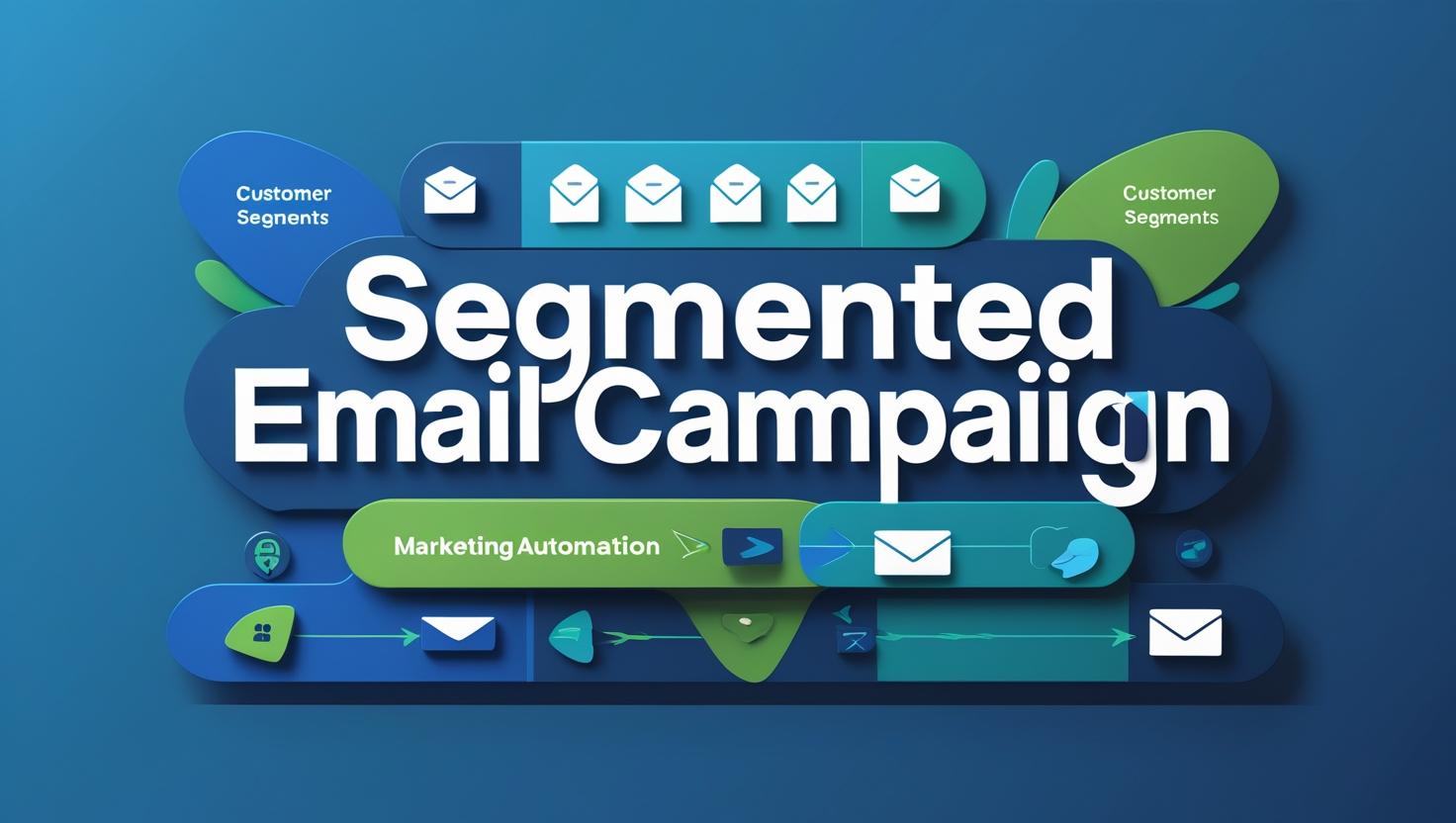Email is a powerful tool for talking to Supercharge Your Emails your customers. Many businesses use emails to share news or sell products. But sometimes, a single email sent to everyone just does not work well. Imagine sending a message about dog food to someone who owns a cat. It would not make much sense, would not it?
This is where segmented email campaigns come in handy. They help businesses send the right message to the right person. Segmentation means dividing your big list of customers into smaller, special groups. Each group gets emails that are perfect for them. This makes your emails much more useful and interesting for everyone. This article will show you how segmentation makes your emails better. It will also help you learn to use this smart strategy.
What Are Segmented Email Campaigns?
Let us understand what segmentation truly means. Think of your customers as a big, varied crowd. Some like sports, others love books. Some buy often, others only sometimes. Sending the exact same email to everyone in this big crowd is like shouting one message from a rooftop. Not everyone will care.
Segmentation changes this. It means you break down your audience into smaller, distinct groups. You put people with similar interests or behaviors together. For example, you might have one group of new customers. Another group could be customers who bought a specific type of product. Each group is unique.
Why is this important? Different people like different things. A new customer needs a warm welcome email. An old customer might need a loyalty discount. When you send messages tailored to these groups, they are more likely to listen. It is like having a quiet chat instead of shouting.
This is different from sending a “send all” email. A “send all” email goes to everyone on your list. It is a one-size-fits-all approach. But we know one size does not fit all. Segmented emails are about sending personalized, helpful content. This greatly increases your chances of success.
Why Segmentation Rocks: Big Benefits for Your Business
Segmented email campaigns bring many great advantages. They do more than just make your emails look good. They genuinely help your business grow. Therefore, understanding these benefits is very important. This strategy can change how you connect with people.
For instance, your customers will feel more valued. When they get emails made just for them, it feels special. This feeling leads to stronger relationships. Ultimately, better relationships mean more sales and happier customers. Hence, let us look at some of these key benefits.
Happier Customers, Higher Sales
Sending relevant messages makes customers happy. Imagine getting an email about something you really want. This makes you feel understood by the sender. Furthermore, it builds a sense of connection. Customers enjoy emails that speak directly to their needs.
This personalized approach increases how much people engage. They open more emails and click on more links. Indeed, they become more interested in what you offer. Consequently, this increased engagement often leads to more purchases. People buy from businesses they trust and like.
Furthermore, it improves customer loyalty over time. Customers will stick with a business that consistently provides value. This leads to repeat business and positive word-of-mouth. Building stronger relationships is key to long-term success. Segmentation helps achieve this goal easily.
Saving Time and Money
Segmentation also helps you use your resources wisely. Instead of sending generic emails to everyone, you focus your efforts. You send targeted phone list messages only to those who are most likely to respond. This means less wasted effort on uninterested people.
Therefore, you get a better return on your investment. Every dollar spent on email marketing works harder. Your marketing budget becomes much more efficient. You are not spending money on messages that will be ignored. This smart use of funds is very important.
Moreover, certain parts of the process can become automated. Once segments are set up, sending relevant emails becomes simpler. This saves valuable time for your team. Consequently, you can focus on other important business tasks. It is a win-win situation for your operations.
Understanding Your Audience Better
Another big benefit is learning about your customers. When you segment, you see which groups respond well to what. You get insights into their behavior. For example, you might learn that one group loves discounts. Another might prefer educational content.
This data helps you make smarter choices. You can refine your marketing strategies over time. It is like becoming a marketing detective. You gather clues and use them to improve your campaigns. This continuous learning is crucial for business growth.
Ultimately, you will gain a deeper understanding of your market. This knowledge can inform not just your emails but your entire business. You will know what your customers truly value. Therefore, you can serve them better in many ways. It is truly powerful knowledge.

How to Build Your Segmented Campaigns
Now you know why segmentation is so good. The next step is learning how to do it. It might seem tricky at first, but it is quite straightforward. We will go through it one step at a time. Therefore, let us start planning your first segmented campaign.
Remember, the goal is to send personalized messages effectively. You need to gather information and use it smartly. This process involves a few key stages. Following these steps will help you set up successful campaigns. Let us dive into the practical side now.
Step 1: Know Your Audience
The first step is to understand who your customers are. What information do you already have about them? Think about their age or where they live. Do you know what they bought from you before? Perhaps you know their interests or hobbies.
You can collect this data in many ways. Surveys are a everyone is racing to deploy good option. When people sign up for your emails, ask them a few questions. Look at their past purchases on your website. Use the information you already possess. Start with basic details first.
For instance, simply knowing if they are a new or returning customer is a great start. Do they live in a cold or warm climate? This simple fact can change your product recommendations. The more you know, the better you can segment.
Step 2: Create Your Segments
Once you have data, it is time to make your groups. Your email platform usually has tools for this. Here are some common ways to segment your list:
- Demographics: This includes age, gender, and where people live. For example, local offers for people in a specific city.
- Purchase History: What did they buy? How often do they buy? Send follow-up emails for related products. Target big spenders with special deals.
- Website Activity: Did they visit certain pages? Did they look at specific products but not buy them? Send reminders for abandoned shopping carts.
- Email Engagement: Do they open your emails often? Do they click on links? Send more content to engaged users. Try to re-engage inactive ones.
- Customer Lifecycle: Are they new sale leads customers, active ones, or have they not bought in a while? Each group needs different types of messages.
Do not make too many segments at first. Start with a few clear groups. You can always add more later. Keep it simple to begin with.
Step 3: Craft Custom Messages
This is where the magic happens. Now you tailor your content for each group. Each segment should get emails that feel unique. Think about different offers for different segments. A new customer might get a welcome discount. A loyal customer might get early access to new products.
Use language that truly connects with them. The subject line is very important. Make it personalized. Include their name if you can. Also, suggest products that match their past purchases. This makes the email much more appealing.
For instance, if someone bought a camera, suggest lenses or camera bags. If they read about gardening, send them tips for spring planting. Show them you understand their needs. This makes your emails helpful, not just promotional.
Step 4: Test and Improve
The last step is very important. Always send small tests first. Do not send a big email campaign without checking it. See what works best for each segment. Look at your email open rates. Also, check how many people click on your links.
If one email performs better, learn from it. Adjust your approach for future campaigns. This is a continuous learning process. What works today might need a tweak tomorrow. Always be ready to improve your strategy.
Keep an eye on what your customers do. Their actions will tell you a lot. Use this information to refine your segments. Also, use it to make your messages even better. This constant fine-tuning leads to great results.
Real-World Examples of Segmented Campaigns
Many businesses use segmented campaigns successfully. Let us look at some common and effective examples. These show how segmentation works in real life. They prove that tailored messages get results.
First, a welcome series for new sign-ups. When someone joins your email list, send them a series of emails. Introduce your brand and offer a small discount. This helps new people get to know you.
Next, abandoned cart reminders. If someone puts items in a shopping cart but does not buy, send them an email. Remind them about their items. Maybe offer a small incentive to complete the purchase. This re-engages interested buyers.
Another great example is birthday offers. Send your customers a special discount or gift on their birthday. It makes them feel appreciated. This builds strong customer loyalty.
Product recommendations based on past purchases are also powerful. If a customer bought a specific item, suggest related products. For instance, after buying a phone, suggest a case or screen protector. This is highly relevant.
Finally, re-engagement campaigns for inactive users. If a customer has not opened your emails or bought anything in a while, send them a special message. Try to bring them back. Offer a discount or ask for feedback. These examples show the true power of segmentation.
Common Mistakes to Avoid
Even with good intentions, mistakes can happen. It is wise to know what to watch out for. Avoiding these common errors will help your segmented campaigns succeed. Therefore, pay attention to these pitfalls.
One big mistake is not segmenting at all. Sending the same email to everyone is a missed opportunity. You lose out on all the benefits we discussed. Start small, but do start.
Another error is over-segmenting. Do not create too many tiny groups. If a segment is too small, it is not worth the effort. It can become very difficult to manage. Keep your segments manageable in size.
Also, some businesses do not update segments. Customer interests and behaviors change. Your segments need to change too. Keep your customer data fresh and relevant. Outdated segments lead to irrelevant emails.
Sending irrelevant content even after segmenting is another problem. Just because you have segments does not mean your content is automatically perfect. You still need to craft thoughtful messages for each group. Do not just segment for the sake of it.
Finally, forgetting to test is a big mistake. Always test your emails. See what works and what does not. Learning from your campaigns helps you improve. Without testing, you are just guessing. These mistakes are easy to fix with a little care.
Conclusion
Segmented email campaigns are truly a game-changer. They help you send the right message to the right person. This leads to happier customers and more sales. You also save time and learn more about your audience. It is a smart way to do email marketing.
Therefore, do not send generic emails anymore. Start dividing your audience into groups. Create personalized messages for each one. This will make your email efforts much more powerful.
